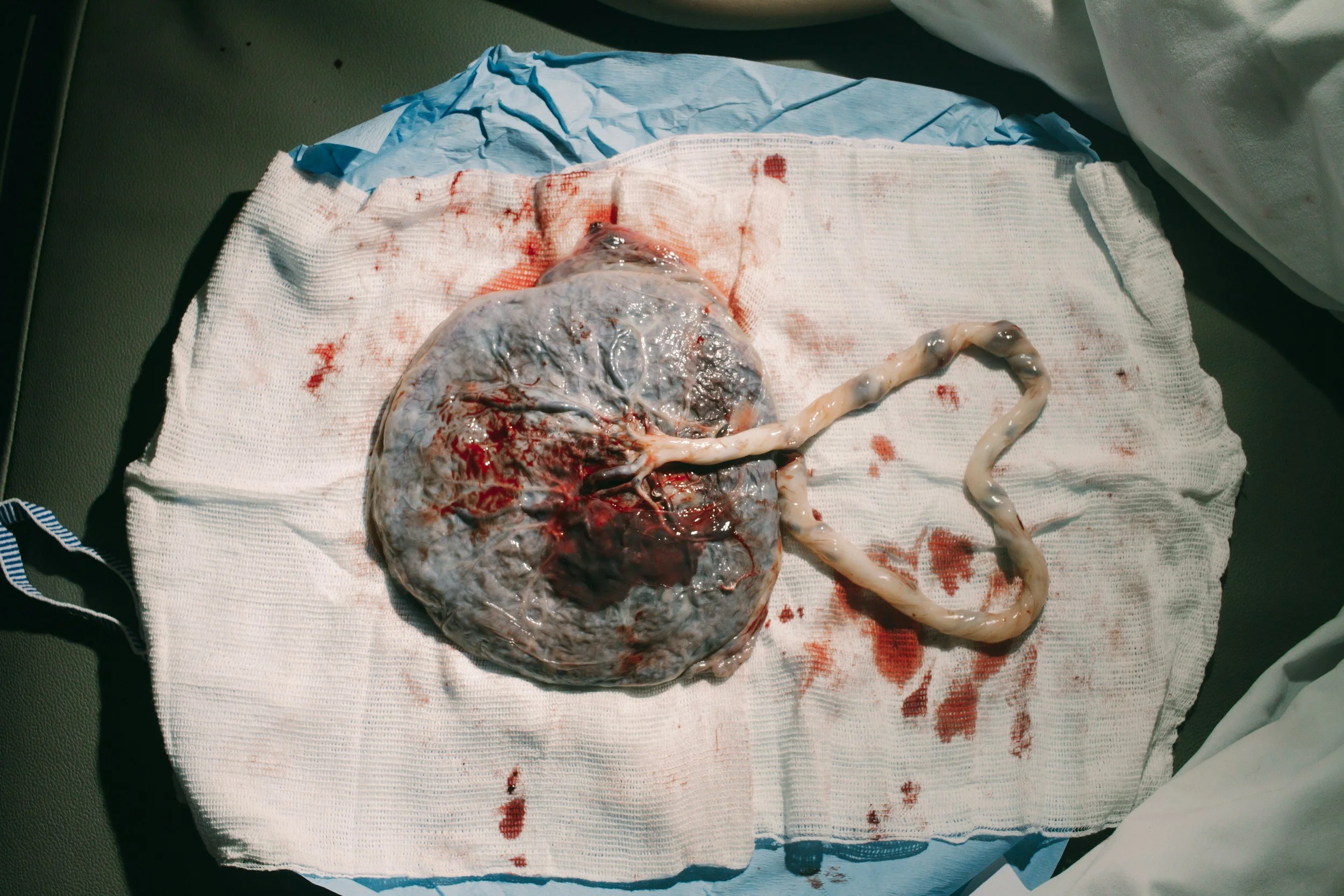Birthing the Placenta: What to Expect and What You Need to Know
The Placenta
When we talk about labour and birth, most people’s minds jump to the moment the baby arrives. But labour isn’t truly complete until the placenta has been birthed. This third stage of labour is just as important as the first two—and understanding your choices, what might happen, and how it’s managed can help you feel calmer and more prepared.
In antenatal education, we cover this stage in detail because it’s often the most overlooked. Yet, the way the placenta is birthed can have a real impact on your recovery and early postpartum experience.
The Third Stage of Labour
After your baby is born, your body still has an essential job to do: detach and expel the placenta and membranes that have supported your baby throughout pregnancy. This usually happens within 5–60 minutes after birth, depending on the approach taken.
There are two main ways of birthing the placenta:
1. Physiological (or “Natural”) Third Stage
The placenta is birthed without medical intervention.
Your body releases a surge of oxytocin after birth, helping the uterus contract and detach the placenta.
Skin-to-skin contact, early breastfeeding, or simply holding your baby can enhance oxytocin release.
Gravity and upright positions, if say to do so, can support this process.
What to expect: Cramping sensations as the uterus contracts, followed by the placenta slipping out—often in one piece. The midwife will check that the placenta and membranes are complete.
2. Managed (or “Active”) Third Stage
In a managed third stage, you are offered a uterotonic injection, usually containing synthetic oxytocin (sometimes combined with ergometrine). It is usually given into your thigh muscle immediately after your baby is born.
This prompts strong uterine contractions, helping the placenta detach more quickly and reducing the likelihood of heavy bleeding.
Once the placenta separates, your midwife or doctor gently assists delivery with controlled cord traction (a steady, careful pull on the umbilical cord).
Why might it be given?
To reduce the risk of postpartum haemorrhage (PPH), which affects around 1 in 20 births.
You may be advised to have it if you have certain risk factors, such as:
A long or induced labour
A large baby
Twins or multiples
Anaemia in pregnancy
Previous postpartum haemorrhage
In many hospitals, it is offered routinely because it can shorten the third stage (usually 5–15 minutes) and lower bleeding risks.
Benefits of the injection:
Reduces risk of significant blood loss
Speeds up placental delivery
Offers reassurance for those with risk factors or complex labours
Possible side effects or risks:
Increased afterpains (stronger cramping as the uterus contracts)
Nausea, vomiting, or headaches (more common if oxytocin is combined with ergometrine)
Raised blood pressure (particularly with ergometrine)
Rarely, the injection can cause the uterus to contract so tightly that the placenta becomes trapped and needs further management
What to expect:
The injection may sting briefly.
The placenta is usually delivered within 15 minutes.
Your midwife will check the placenta carefully to make sure it is complete, reducing the risk of retained fragments.What Can Go Wrong—and How It’s Managed
3. Most third stages proceed smoothly, but sometimes challenges arise:
1. Retained Placenta
The placenta or membranes don’t fully come away within the expected time (usually 30–60 minutes depending on the approach).
This may be due to the placenta still being attached (adherent), trapped in the uterus, or separated but not delivered.
Management:
Changing position, encouraging urination, or gentle stimulation may help.
If not effective, manual removal in theatre with anaesthesia may be necessary.
2. Postpartum Haemorrhage (PPH)
Heavy bleeding (usually more than 500ml) can occur if the uterus doesn’t contract strongly enough after birth.
More likely if the uterus is very tired (after a long or induced labour, multiple pregnancy, or large baby).
Management:
Medications to contract the uterus (oxytocin, ergometrine, misoprostol).
Uterine massage or compression.
In rare cases, surgery may be required.
3. Retained Tissue or Membranes
Small pieces of placenta or membrane may remain, preventing the uterus from fully contracting.
Management:
Careful examination of the placenta and membranes immediately after delivery.
If fragments are suspected, they may need to be removed manually or surgically.
Supporting a Safe and Positive Third Stage
Whether you choose a physiological or managed third stage often depends on your preferences, your health, and how labour unfolds. You might:
Discuss your preferences in your birth plan.
Learn how environment, hormones, and simple measures like skin-to-skin can support a natural third stage.
Understand why a managed third stage might be recommended and when flexibility is important.
Why This Knowledge Matters
The birth of the placenta is sometimes called “the forgotten stage,” but it plays a crucial role in your overall birth experience and recovery. Being aware of your choices and understanding what’s normal—as well as what might require extra support—can make a big difference in how confident and calm you feel.
At The Bubba & Me Club, our antenatal courses explore the third stage of labour in detail, alongside other key topics like the physiology of birth, hormones, and birth environment. Our goal is not only to prepare you for the moment your baby arrives, but also for everything that follows—because every stage matters.
✨ Knowledge is empowering. When you understand the whole journey of birth—including the often-overlooked final stage—you can make informed choices that support both your safety and your sense of agency.


